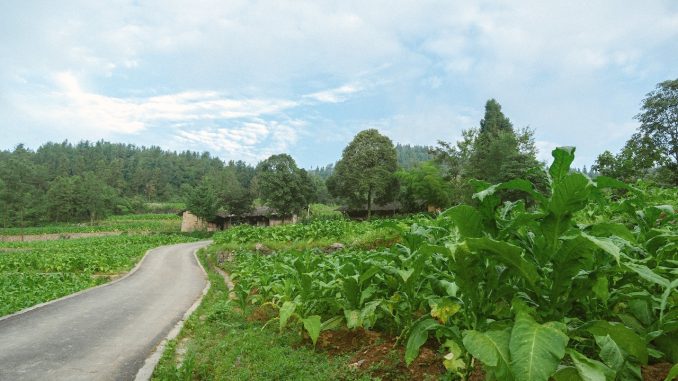
Tobacco is the main ingredient in cigars, and depending on where it originates from, your cigar can have a different flavor, strength and feel. Whether you are somebody who has enjoyed smoking cigars for some time, or you have recently started getting into it, it’s always good to know about where the tobacco comes from and how it is grown. Ultimately, understanding the different types of tobacco that is used in cigars will help you better understand the flavors that are available to you and make it easier for you to choose a cigar that suits your preferences and is a good fit for you.
The type of tobacco that is used to make a cigar is an important factor to understand, as it has an impact on everything from the flavor profiles to the burn time, and even how much the cigar costs.
Different Types of Cigar Tobacco
The most popular types of tobacco used in cigars are:
- Broadleaf: One of the most common among lovers of bold cigars, it’s often used as the filler, but is sometimes used in the wrapper to produce a darker cigar. It produces an earthy, rich flavor with some sweetness.
- Ligero: Made from the leaves at the top of the tobacco plant, this type tends to have a lot of power and is used in cigars that pack a punch.
- Habano: A darker tobacco with a potent aroma and spicy taste that is often used as a wrapper. The seeds originate in Cuba, where they were created to be blue mold resistant.
- Sumatra: An Indonesian tobacco that now has variations all around the world. Generally, it is dark and has a kick to it, although cigars made from it are not usually very strong. The taste can vary depending on where it is grown.
How Different Tobacco Leaves are Used in Cigars
The tobacco plant is made up of several different leaves, all of which have a part to play in the manufacture of cigars. Which leaf is used and how it is used can impact the taste, strength, boldness, burn time and more.
Ligero
This tobacco is made from the tallest leaf on the tobacco plant, which is also the youngest of the leaves and the last to be harvested. But despite their younger age, the ligero leaves soak up more sunlight in comparison with any other area of the tobacco plant. As a result, cigars that are made with ligero tobacco provide the most intense concentration of strength, body, and flavor.
Ligero leaves are harvested at a point where they appear to be wilted. Since they are the last part of the plant that is primed during the harvesting process, the ligero tobacco grows to huge proportions. The leaves are packed with oils, sugars, resins and nicotine content, which makes it one of the most popular options among full-bodied cigar manufacturers. It’s often used to make premium cigars. You can find a selection of premium cigars here.
As the planet channels all the nutrients from the soil to the remaining ligero leaves, this kickstarts a unique process of fermentation. At this point, the chlorophyll has started to break down, with all the oils, sugars and resins within the blade starting to decompose inside the leaf. As a result of this, ligero leaves that are harvested late develop earthier, intense undertones, making them a prime option for maduro cigar wrappers.
Volado Leaves
At the bottom of the tobacco plant are the volado leaves. These are also sometimes referred to as ‘sand leaves’ thanks to their close proximity to the soil beneath them. Due to their proximity to the earth, many cigar manufacturers do not use volado leaves, even though it can bolster the cigar’s combustion and burn rate. Volado leaves are known for spending most of the time covered in soil, which can cause issues where purity is concerned.
Since tobacco leaves are naturally quite sticky, they can be very prone to picking up foreign contaminants from the soil. Along with this, many tobacco plantations use fertilizers – something that cigar manufacturers want to avoid getting into their products.
Another problem with the volado leaf is that they are often prone to producing off flavors, either from the impurities picked up from the soil or the organic design. This is not always the case due to the variety of seed types and environments where tobacco plants grow.
Some cigar brands do rely on volado leaves for some of their filler. However, they are only typically used after being thoroughly cleaned and inspected.
Viso Leaves
The multi-tool of the tobacco world, viso leaves are a popular choice as they grow high enough on the plant that they are not at risk of being contaminated by soil, but still receive enough sunlight. Viso leaves are stretchy and silky, yet fragrant and flavorful. They are highly versatile and can be used in almost any part of the cigar, from the filler and cap to the wrapper and binder. Combustion is one of the best properties of this leaf, and there’s virtually nothing that it can’t do.
Seco Leaves
Located directly above the volado leaves on the tobacco plant, the seco leaves tend to be a very light green color, due to the lack of sunlight that they receive. They are aromatic and wispy, which is why seco leaves are where a lot of the finer tobacco fragrances come from. The upper foliage levels tend to be more pungent compared to the leaves that are located lower down the stalk.
Just a few leaves per plant are usually removed after the first round of priming. Then, most plantations will wait a week before harvesting further. While not all will do this, the main purpose behind it is to allow the next layer of seco leaves to absorb the nutrients that would normally be going to the leaves underneath them. This leads to more potent flavors along with an increase in leaf size and better elasticity.
How Long Does It Take to Harvest Tobacco for Cigars?
Typically, it takes around ninety days for a tobacco plant to grow from a fresh seedling to a completely stripped stalk. Some tobacco strains can be harvested sooner, while others finish their life cycle a little later. However, three months is an average norm for the majority of tobacco that is used in cigars. Bear in mind that these timeframes can be affected by various factors such as inconsistent weather patterns, varied growing environments, and plantation logistics.
Having a bit of everything available is the best practice from the standpoint of cigar manufacturers. Combining a range of primings from various types of tobacco plants from different countries and regions can create a very complex and interesting smoking experience. That being said, there are some excellent single-origin cigars out there, that use the right seed variety planted and grown in the perfect environment before being primed, cured, and harvested using the right techniques.
Grown in different countries around the world, the tobacco used in cigars can taste and feel different depending on where it comes from and how it is harvested. Understanding how the tobacco plant is used to make cigars, and the different types of tobacco used, can help you choose the perfect cigar or you.

